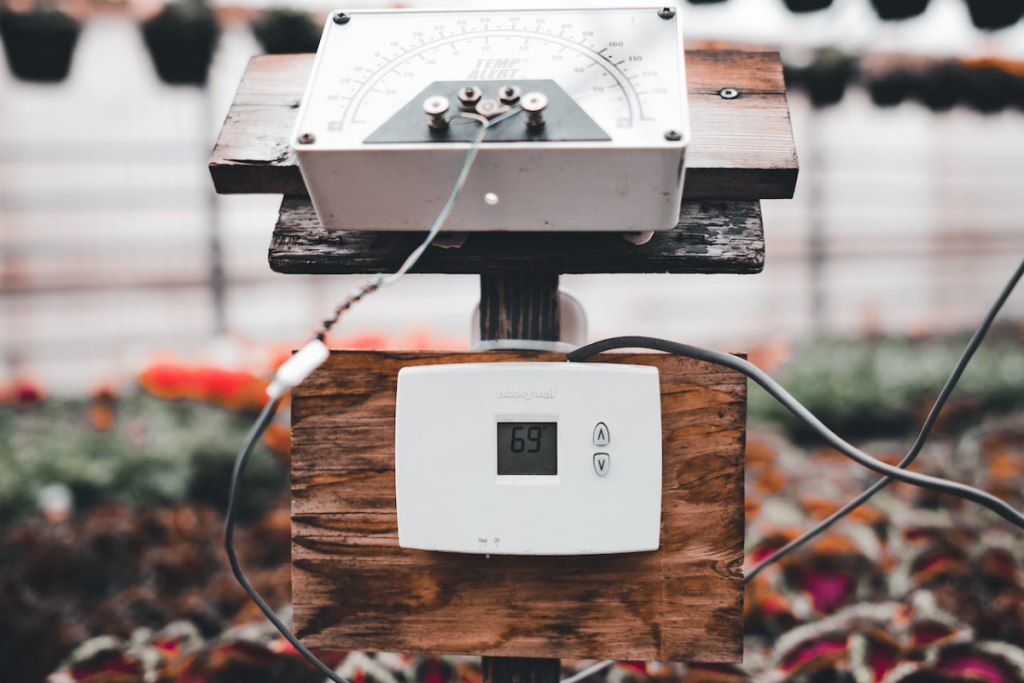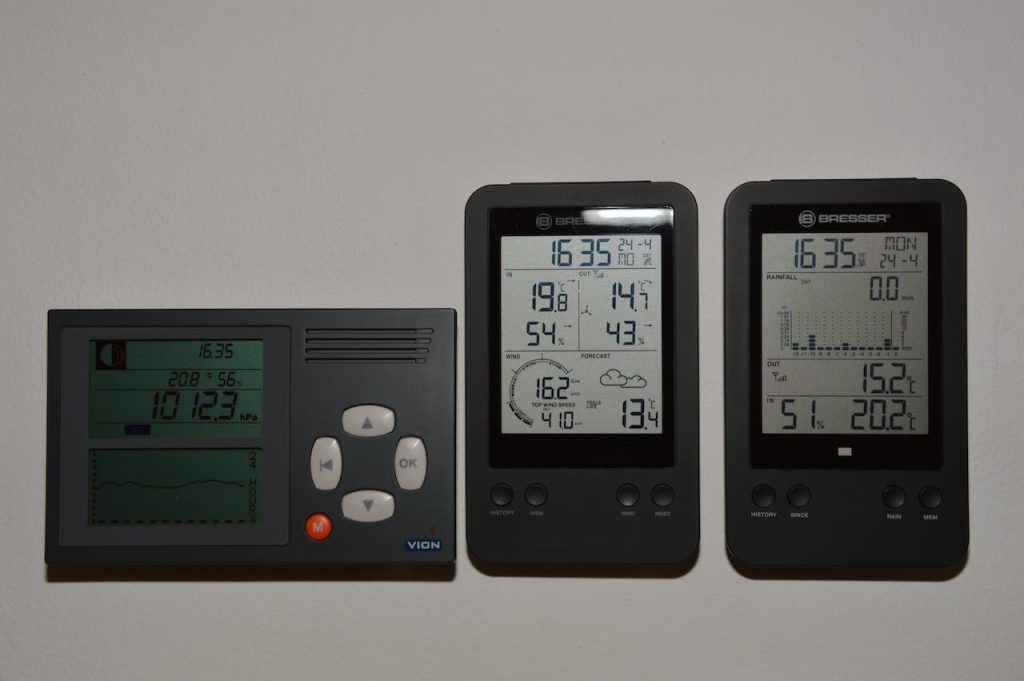Do you want to know how to stop Nest thermostat from changing the temp on its own?
It can be frustrating to come home to a house that’s too hot or too cold, especially if you thought you had set the perfect temperature before leaving.
Fortunately, there are a few ways to stop your Nest thermostat from changing the temperature without your permission.
One option is to disable the Eco Temperatures feature.
This feature automatically switches your Nest thermostat to an energy-saving temperature when it senses that you’re away from home.
While this can be helpful for saving money on your energy bill, it can also be annoying if you prefer to keep your home at a consistent temperature.
To disable Eco Temperatures, simply select your thermostat on the Nest app home screen.
Then, select Home/Away Assist, and turn off the option to automatically switch to Eco Temperatures.
Another option is to turn off Auto-Schedule learning.
This feature allows your Nest thermostat to learn your temperature preferences over time and create a schedule based on those preferences.
However, if you find that your Nest thermostat is changing the temperature on its own, it may be a sign that Auto-Schedule is not accurately reflecting your preferences.
To turn off Auto-Schedule, go to the Settings menu on your Nest unit, scroll all the way to the right, and select Reset.
Then, select the option to turn off Auto-Schedule.
How To Stop Nest Thermostat From Changing Temp
If you’re tired of your Nest thermostat changing the temperature on its own, there are a few things you can do to stop it.
In this section, we’ll cover three methods you can use to prevent your Nest thermostat from changing the temperature without your input.

Adjusting The Schedule
One way to stop your Nest thermostat from changing the temperature is to adjust the schedule.
By setting a schedule for your thermostat, you can tell it when to turn on and off, and what temperature to maintain during different times of the day.
To adjust the schedule on your Nest thermostat, follow these steps:
- Open the Nest app on your phone or tablet.
- Tap on the thermostat you want to adjust.
- Tap on the “Schedule” button.
- Use the sliders to adjust the temperature and time settings for each time period.
- Tap “Done” when you’re finished.
Turning Off Auto-Schedule
Another way to prevent your Nest thermostat from changing the temperature is to turn off the Auto-Schedule feature.
With Auto-Schedule turned off, your thermostat will no longer learn from your temperature adjustments and will only follow the schedule you set.
To turn off Auto-Schedule on your Nest thermostat, follow these steps:
- Open the Nest app on your phone or tablet.
- Tap on the thermostat you want to adjust.
- Tap on the “Settings” button.
- Scroll down and tap on “Auto-Schedule.”
- Toggle the switch to turn off Auto-Schedule.
Disabling Learning Feature
The third method to stop your Nest thermostat from changing the temperature is to disable the learning feature.
This feature allows your thermostat to learn your temperature preferences over time and adjust the temperature accordingly.
By disabling this feature, your thermostat will no longer learn from your temperature adjustments and will only follow the schedule you set.
To disable the learning feature on your Nest thermostat, follow these steps:
- Open the Nest app on your phone or tablet.
- Tap on the thermostat you want to adjust.
- Tap on the “Settings” button.
- Scroll down and tap on “Learning.”
- Toggle the switch to turn off Learning.
By using any of these methods, you can stop your Nest thermostat from changing the temperature on its own.
Choose the method that works best for you and enjoy greater control over your home’s temperature.
Troubleshooting Common Issues
If you’re experiencing issues with your Nest thermostat changing temperature on its own, there are a few things you can try to troubleshoot the problem.
Here are some common issues and how to fix them.
Resetting The Thermostat
One of the first things you can try is resetting your Nest thermostat.

This can help resolve any software glitches or bugs that may be causing the thermostat to change temperature on its own.
Here’s how to reset your Nest thermostat:
- Press the Nest ring to open the Quick View menu.
- Select “Settings” and then “Reset.”
- Choose “Restart” to reboot the thermostat.
After the thermostat restarts, try adjusting the temperature again to see if the issue has been resolved.
Checking For Software Updates
Another possible issue could be outdated software on your Nest thermostat.
Checking for software updates can help ensure that your thermostat is running on the latest version.
Doing so may resolve any bugs or glitches causing it to change temperature on its own.
Here’s how to check for software updates:
- Open the Nest app on your mobile device.
- Select your thermostat and then select “Settings.”
- Scroll down and select “Technical Info.”
- Look for the “Software Version” section and check if there are any available updates.
- If there is an update available, select “Update” to install it.
After the software update is installed, try adjusting the temperature again to see if the issue has been resolved.
By following these troubleshooting steps, you can help identify and resolve common issues with your Nest thermostat changing temperature on its own.
If you continue to experience issues, it may be helpful to contact Nest customer support for additional assistance.
Maintaining Optimal Thermostat Settings
Maintaining optimal thermostat settings can be a challenge, especially when your Nest thermostat keeps changing the temperature on its own.
Here are some tips to help you keep your Nest thermostat from changing the temperature and maintain optimal settings:
1. Disable Auto-Adjustments
To prevent your Nest thermostat from making automatic temperature adjustments, you can disable the auto-adjustment feature.
Follow these steps to disable auto-adjustments:
- Open the Nest app or log in to your Nest account.
- Select the thermostat you want to configure.
- Tap on the settings icon.
- Scroll down to the Auto-Schedule section and turn it off.
2. Use The Hold Temperature Feature
The Hold Temperature feature on your Nest thermostat allows you to set a specific temperature and maintain it until you turn off the feature.
Here’s how to use the Hold Temperature feature:
- Adjust your Nest’s temperature for either heating, cooling, or both.
- Choose the “Hold Temperature” button, represented by a little clock face.
- Set the temperature you want to maintain.
- Turn off the Hold Temperature feature when you want to resume normal temperature settings.
3. Adjust Temperature Settings Manually
If you prefer to adjust your Nest thermostat’s temperature settings manually, you can do so by following these steps:

- Open the Nest app or log in to your Nest account.
- Select the thermostat you want to configure.
- Tap on the settings icon.
- Scroll down to the Temperature section and adjust the temperature settings manually.
4. Check For Software Updates
Occasionally, Nest releases software updates that can help improve the performance of your thermostat.
To check for software updates, follow these steps:
- Open the Nest app or log in to your Nest account.
- Select the thermostat you want to configure.
- Tap on the settings icon.
- Scroll down to the Software Update section and check for updates.
By following these tips, you can maintain optimal thermostat settings and prevent your Nest thermostat from changing the temperature on its own.
Key Takeaways
If you’re tired of your Nest thermostat changing temperature without your consent, there are a few things you can do to prevent it from happening.
Here are the key takeaways:
- Turn off the Nest’s auto-schedule feature to prevent it from learning your preferences and adjusting accordingly.
- Use the “Hold Temperature” button to set the temperature manually and prevent any changes.
- Check the “Forced Heat” setting to ensure that your Nest thermostat is not overriding your temperature settings.
- Use a lockbox to keep your Nest thermostat secure and prevent anyone from changing the temperature.
- Reset your Nest thermostat by removing the batteries or unplugging it for a few minutes.
- Put a “No Temp” sign on your Nest thermostat to prevent anyone from adjusting the temperature.
- Consider using a different thermostat if you’re still experiencing issues with your Nest thermostat.
By following these tips, you can take control of your Nest thermostat and prevent it from changing temperature without your consent.

